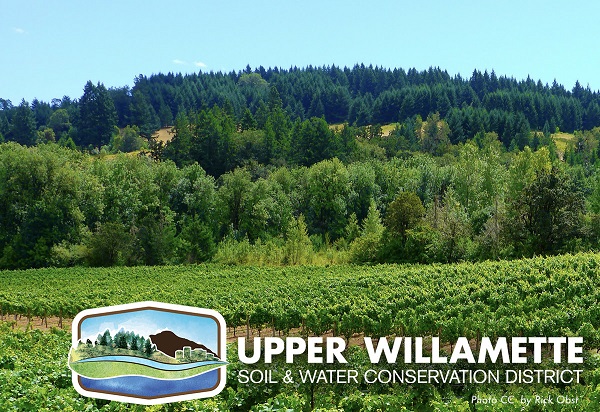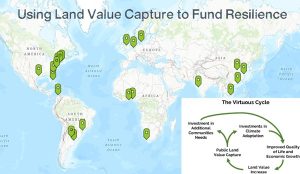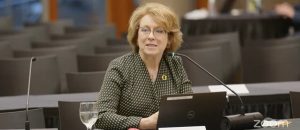Consider serving as a board member of your soil and water conservation district
4 min read
from the Upper Willamette Soil and Water Conservation District
We are here because of you. In 2020, Lane County voters passed our tax levy (thank you!), making it possible for us to expand our mission of conservation and provide more support and services to people within our community, both rural and urban.
We answer directly to Lane County taxpayers through our Board of Directors, each of whom are elected by you. In 2024, Oregon changed the rules about who is eligible to run for election as a board member of SWCDs like ours: all you have to do now is to be a registered voter and live in the zone of our district that you wish to represent, or run for an open at-large position.
Four of our five zone director seats are up for election in 2024, along with one at-large position. We hope you’ll consider running for election and joining our team as a member of our board. It’s easier than you might think! You’ll find more information on our website here: uwswcd.org/board.
In other District news, we’re very excited to partner with the Lane Community Health Council and Food For Lane County on a program that will provide more food security in our community over the next five years in part by supporting local farmers. Click here to learn more about this collaboration.
Another important program we’re honored to help support is the Lane County Audubon’s Habitat Haven Backyard Certification Program. Participants in Eugene or Springfield who are on half an acre or less can sign up to have an expert evaluate their yard and receive specific recommendations for native species to plant and invasives to remove, creating better habitat for pollinators and urban wildlife. You work at your own pace to remove invasive species, plant native plants, and transition to eco-friendly gardening practices with support from Lane County Audubon. Learn more here: laneaudubon.org/habitat-haven
However you plan to spend your summer, we hope you’ll take time to get involved with your community in whatever way you can, enjoy some delicious local food, and spend time in nature.
Increasing Indigenous leadership in prescribed burning in the Upper Willamette
Prescribed burning – also commonly referred to as ecological burning – has been used by Indigenous people for thousands of years to manage the landscapes of the Willamette Valley. Frequent low-intensity fires supported vibrant native prairie, oak savanna, and woodland habitats, while also nourishing plants and animals that provided cultural foods and materials.
The Willamette Valley Fire Collaboration is an Indigenous-led program that is returning “good fire” to our local landscapes, while also connecting Tribal and Indigenous youth with cultural traditions and providing job training experiences. Operations & Outreach Coordinator Olivia Xochiquetzal Kasama articulated the need for the program this way in a recent interview with Bonneville Environmental Foundation’s Treeline newsletter:
“I think what makes the Willamette Valley special is that it is such a visibly fire-adapted area, with the oak savannas, and it’s a place where the land is extremely dependent on fire. It seemed like a place where a greater degree of collaboration around cultural and prescribed fire was needed, which was the impetus for starting the program.”
The Upper Willamette Soil & Water Conservation District has been providing capacity and program funding for the Willamette Valley Fire Collaboration for the past two years as part of our Forest Health & Resilience Program, which seeks to reduce wildfire risk, increase forest health, and promote innovative management practices such as ecocultural fire.
A healthier watershed for Bear Creek
One of our two collaborators of the year in 2023, Mary Schoenheit lives in the Bear Creek watershed, a tributary of the Long Tom River. Mary manages Synergy Stables, a boarding facility where local and travelling equestrians can keep their horses. Mary began working with us in November of 2022, setting conservation goals to reduce the amount of sediment, nutrients and bacterial runoff from the facility’s manure entering one of the braided channels of mainstem Bear Creek.
We helped Mary implement conservation practices to help her achieve those goals. This included the removal of a manure pile away from the riparian environment, where it could be safely composted and used by local farms and ranches. We also helped Mary install new horse fencing that would allow horses access to various pastures while protecting the soil from compaction and erosion during Oregon’s rainy season.
The second phase of Mary’s project will implement a Manure Compost Facility to provide a covered, off-ground storage facility for future manure to be properly stored as it cures during the composting process. Properly composted manure will kill off any harmful bacteria and allow Mary to re-apply this manure as fertilizer to her pastures for years to come.
We would like to give special recognition to the Long Tom Watershed Council, who provided the project funds for the first phase of this project and without which this accomplishment would not have been possible.
And the biggest thanks to Mary Schoenheit for all her hard work towards such a wonderful conservation project!
Upcoming meeting dates
Monthly Board of Directors meetings
- July 9, noon – 2 p.m.
- Aug. 13, noon – 2 p.m.
- Sept. 10, noon – 2 p.m.
Finance Committee
- Aug. 12 at 10:30 a.m.
DEI Committee
- Sept. 3, 2024 at 10 a.m.
As always, the public is invited to attend all meetings, either in person or over Zoom. Please email admin@uwswcd.org or visit our website for more information.



